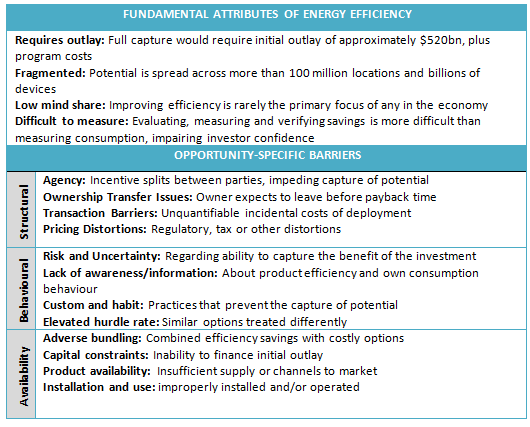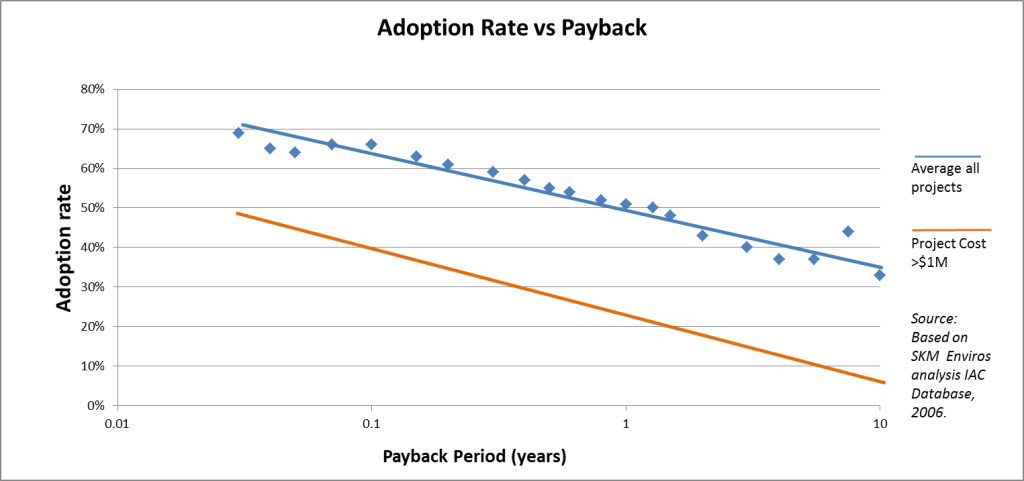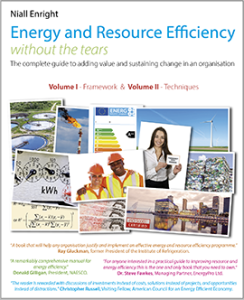 Let’s be clear from the outset, if resource efficiency were easy then everyone would be doing it. Resource efficiency is complex. It requires many parts of the organisation to be engaged for protracted periods of time. It seems never-ending, no sooner has some improvement been made but there is a demand for more – whether to satisfy regulators or to remain competitive. In short, resource efficiency is not easy! The reasons to start the resource efficiency journey are nevertheless quite compelling:
Let’s be clear from the outset, if resource efficiency were easy then everyone would be doing it. Resource efficiency is complex. It requires many parts of the organisation to be engaged for protracted periods of time. It seems never-ending, no sooner has some improvement been made but there is a demand for more – whether to satisfy regulators or to remain competitive. In short, resource efficiency is not easy! The reasons to start the resource efficiency journey are nevertheless quite compelling:
- For most organisations there remains a large amount of value to be unlocked;
- Resource inefficiency represents a major threat to our survival. Society’s demand for improvement is bringing about rapid change which we can either actively shape or passively observe. To be a winner we need to engage with this change and use it to competitive advantage;
- There is a moral imperative to do so. Our organisations are not islands; we have obligations to many stakeholders not just in the present but also in the future.
In Chapter 2.1 we saw that there is a large body of evidence that points to the fact that our public, manufacturing and service sectors remain very inefficient in the use of resources. Not only is this bad for the environment, but it represents a source of significant lost value and competitive advantage. McKinsey & Company[ Granade2009 ] have recently published a startling analysis of the potential for energy efficiency in the US Economy. In it they concluded:
- Energy efficiency represents a vast, low cost, energy resource for the US economy;
- A program, executed at scale, would deliver US $1.2 trillion savings for an investment of $520 billion – a payback[1] of less than 6 months![2];
- This saving represents 23% of projected 2020 energy demand or 1.3 GT of CO2e.
Although the savings estimation above excluded “program costs”, the effort needed to realise the opportunities, these costs are relatively small, and are calculated by McKinsey & Company as between, $50 billion and $150 billion (i.e. just 10% to 30% of the direct investment costs).
It seems that even when firms are explicitly shown the savings potential, there is a failure to fully realise the value identified. An interesting study [ Enviros2006 ] by consultants SKM Enviros[3]looked at the uptake of recommendations made following energy efficiency audits in manufacturing industry in the US, and concluded:
- The adoption rate for projects depended on the payback, as expected
- The greater the savings potential for a project, the less likely it was to be adopted
It is the latter point that is somewhat counter-intuitive. The study indicated that if you have a project saving $1,000 with a one-year payback then there was a 50% probability of adoption, but for a $1,000,000 project, the adoption probability drops to around 20%, as illustrated in Figure 50. Surely the very fact of the size of the savings available would act as an encouragement to adoption, not the opposite? The greater the value the less likely organisations are to act – why is that?
Figure 52: Project Adoption Rate versus Payback
If we tapped someone on the shoulder and said “look there’s a £10 note on the floor over there, all you need to do is to bend down and pick it up” it would be reasonable to expect them to pick that note up. And yet the reality is that organisations don’t stoop down to pick up the note, or at least not all of them. Why not? One explanation could be that there are actually lots of £10 notes and even £20 and £50 notes around and these others were the ones being picked up, or perhaps the organisations simply don’t believe the note is worth £10. Clearly decisions to invest in resource efficiency are not straightforward.

Figure 53: McKinsey & Co: Multiple Challenges associated with pursuing energy efficiency
In their report on energy efficiency opportunities in the US economy, McKinsey & Company provide a very good summary of the barriers that prevent the uptake of energy efficiency measures. These are shown in Figure 51.
The SKM Enviros study described the barrier to action as being the result of “hidden and missing costs”, that is to say that the headline cost assumptions in the projects are overly optimistic, and in reality there are additional costs associated with project identification, monitoring, risk, management and so forth. These are what McKinsey calls “Opportunity-Specific Barriers”, such as “Transaction Costs” and “Risk and Uncertainty” barriers. In simple terms, the £10 note was not perceived to be worth £10.
Figure 54 The cartoonist Scott Adams describes just one of the barriers to resource efficiency called “split incentives” or the “agency barrier”. The typical example of this type of barrier is the landlord-tenant split where a landlord can make cost-effective improvements to a building’s energy systems but is not incentivised to do so because all the benefit will be seen by the tenant in terms of reduced energy bills. {Dilbert Dec 26 2006 <a href=”http://dilbert.comhttp://dilbert.com/strips/comic/2006-12-25/” title=”Dilbert.com”><img src=”http://dilbert.com” border=”0″ alt=”Dilbert.com” /></a> }
In Part 3 of this handbook there is a detailed examination of each of these barriers to success, and what they teach us about implementing a successful resource efficiency program. We will demonstrate, using practical examples, how these barriers can be overcome with an appropriately designed program.
However there is one factor that neither McKinsey nor SKM Enviros have listed, which is possibly the single most important determinant of success in resource efficiency programs: management commitment. Without such a commitment, or when the commitment ceases, a resource efficiency program is almost inevitably doomed to failure. If we look at some of the organisations who we would consider to be leading in resource efficiency – 3M, Dow, Ford, GE, AkzoNobel, DuPont, BASF – these are organisations where there has been visible leadership and support from the top. Similarly if we consider those organisations where the effort has been token or unsuccessful they all share a distinct lack of imperative for action from senior management.
The reason why this continuous management commitment is so important is that resource efficiency is fundamentally about changing decision-making processes, and organisations are poor at changing without a clear and visible mandate from the top. If the leadership are not willing to visibly support the needed change, then we should not be surprised if the employees fail to respond. It is important to emphasise that this management commitment needs to be sustained indefinitely as the continuous improvement process becomes “part of the way we do business”.
Recognising that resource efficiency is not easy will help us to manage expectations when the leadership need us to implement a program. For example one of the first thing that it would be wise to do if asked to develop a program is to re-iterate the need to ongoing, visible commitment from the management team. This commitment does not need to be excessive in terms of time, but it does need to be visible and reinforced by actions. We have demonstrated the value of resource efficiency in the preceding section, but we should not fall into the trap of thinking that because the value exists, it will be easy to unlock – far from it.
[1] Payback represents the number of years (or months) that an investment will be recovered from project savings. This is described in Chapter XX.
[2] A recent study by ACEEE[ sachs2012long ] concludes that even greater savings could be realised.
[3] All organisations are referred to by their present-day names in order to assist readers in establishing contact with the organisations should they wish to. This study was actually carried out by Enviros Consulting Ltd, prior to being acquired by SKM, but the reference is to SKM Enviros.





0 Comments